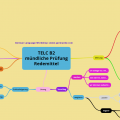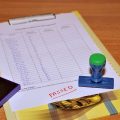Author: Jadranka Bokan
When we are learning German grammar, we learn it from the start gradually and in a straight line. We start with a subject in a sentence, then continue with an object, learn adverbs and adjectives and at some point start learning about subordinated sentences (wenn, weil, obwohl etc.).
As we learn more, we start forgetting more, right? At the point when we reach the B2 level, we start mixing things up and loosing orientation in abundance of information.
This becomes very noticeable when we, for example, try to resolve the tasks from the so called Sprachbausteine part 2 – which is much more difficult than the Sprachbausteine part 1 – and one of the most notorious parts of the exam TELC B2.
If you are preparing yourself for the TELC B2 exam, then you know what I am talking about. For those who still don’t know what it’s about, here is a short description: Sprachbausteine 2 look like a letter with blanks and your task is to choose the correct answer among the words in a word box below the letter. Here is an example:
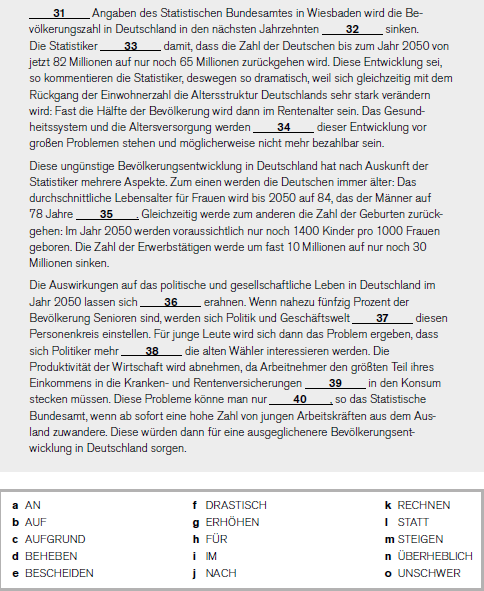
When you start exercising, it may look scary, but I assure you, it doesn’t have to be. There are some tips for resolving the tasks in this part of the TELC B2 exam:
Sort & organize.
Apply.
Greater picture.
Sort & organize. Before you start resolving each of the blanks, take a look at the box with offered solutions below the text, take a pencil and mark all the words that are the same part of speech (nouns/verbs/adjectives,adverbs/pronouns/particles/conjunctions). For example, underline with a straight line all nouns, mark all verbs with a star (asterisk*) etc. By sorting and organizing the offered words in this way you will have a better overview and will be able to choose better the correct solution.
Here are descriptions of basic parts of speech:
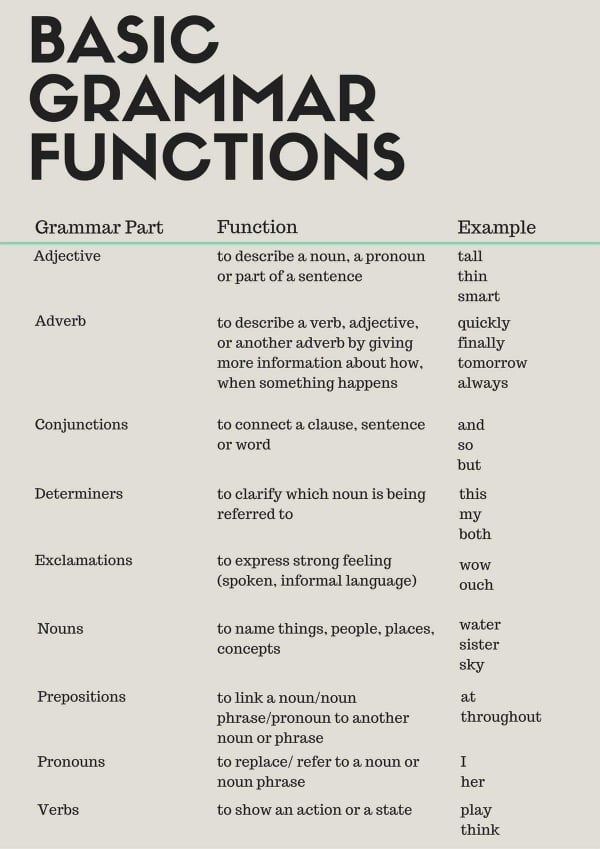
Apply. When resolving the blanks (tasks), ask yourself first:
Which part of speech is needed here? Is the missing word a noun, a verb, an adjective/adverb or a conjunction?
Once you answer this question, take a look ONLY at exactly the words in the word box that you have previously marked as one and the same part of speech that you now need. Take a look at those words and choose the correct one according to its form and meaning.

Greater picture. Be aware of it that a Subject, Object, Information on time, place or cause and even an attribute can be:
- 1 word
- more than 1 word (phrase)
- 1 sentence
Here is what this looks like:
Subject (answers the question: WER? WAS?):
1 word:
Peter schreibt einen Brief.
1 Phrase (more than 1 word):
Ein fleißiger Schüler scheibt einen Brief.
1 sentence:
Wer alle Regeln gut kennt, kann einen Brief gut schreiben.
Before you continue reading, take a look at this video that I took in order to explain the position of the verb in the main sentence depending on the number of words (1 word/more than 1 word/whole sentence) that we are talking about in this chapter:
Object (WEN? WAS?):
1 word:
Ich höre dich.
1 Phrase (more than 1 word):
Ich höre einen bellenden Hund.
1 sentence:
Er hat mir gesagt, dass er einen bellenden Hund gehört hat.
Ich habe ihn gefragt, ob er einen bellenden Hund gehört hat.
Ich habe ihn gefragt, wann er einen bellenden Hund gehört hat.
Time (WANN?)

1 word:
Ich komme morgen zu dir.
1 phrase (more than 1 word):
Ich komme früh am Morgen zu dir.
1 sentence:
Ich komme zu dir, wenn ich Zeit finde.
Place (WO?)
1 word:
Ich bin hier.
1 Phrase (more than 1 word):
Ich bin vor dem Kino.
1 sentence:
Ich möchte leben, wo meine Freunde leben.
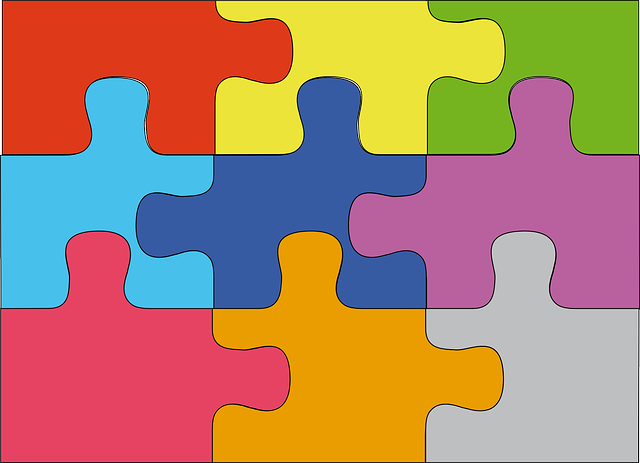
Attribute (WAS FÜR EIN, EINE?):
1 word:
Ich wohne in einem schönen Ort.
1 Phrase (more than 1 word):
Ich wohne in einem weit entfernten Ort.
1 sentence:
Ich wohne in einem Dorf, wo alle ins Ausland ausgewadert sind.
Ich wohne in einem Dorf, das weit entfernt von hier ist.
And now it’s time to exercise Sprachbausteine in the format as they appear in the TELC B2 exam. Order your book here:
These were my tips for Sprachbausteine 2. Do you have some other tips that you’d like to share with me and your fellow learners? Then write an e-mail to jadranka.bokan@yahoo.de. Also, I am here to help you should you have any further questions about the TELC B2 exam or about anything else related to learning German.




